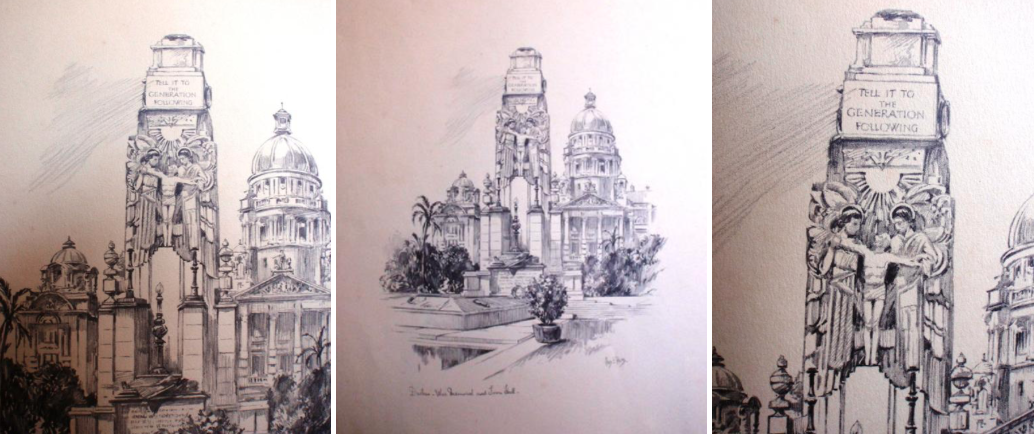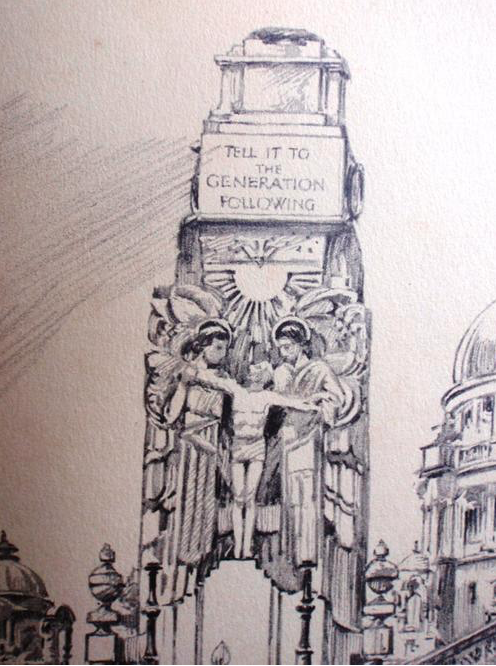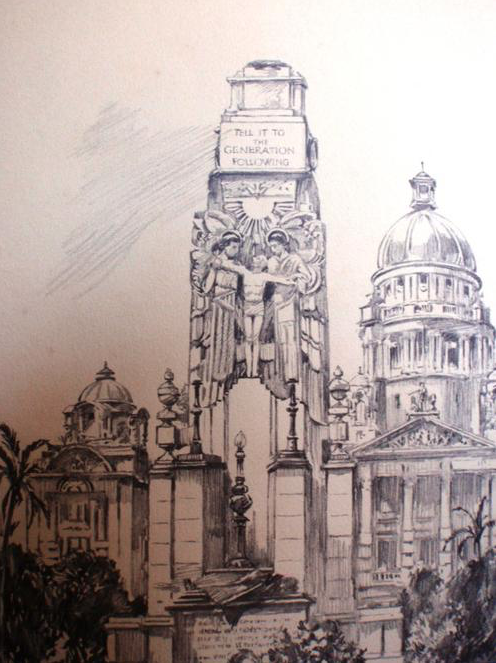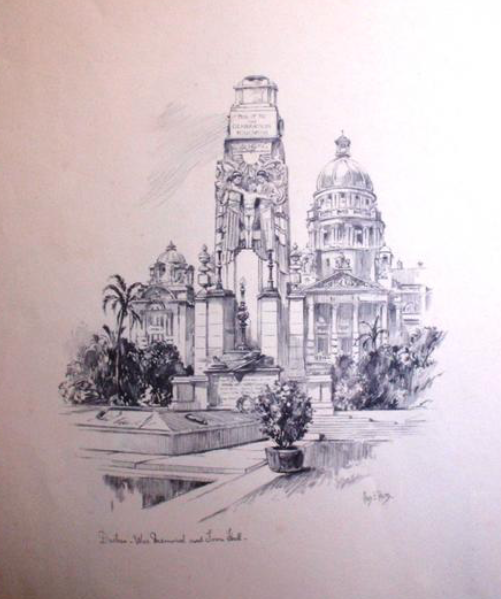
The above illustrations are three of a set of nine lithographs of Charles Ernest Peers and presented as a collection: “A Souvenir of the Visit of the Imperial Press Conference to Cape Town in 1935". The set was recently sold on the auction site BidorBuy (click here to view listing).
Durban’s cenotaph was erected in the 1920s (unveiled in 1926) and honours the Durban men who fell during the First World War.
The relevance of these drawings is the recent damage and desecration done to the Durban war memorial (November 2017). Police recovered the brass plates stolen from the cenotaph and arrested eight suspects, who appear to have been part of a syndicate involved in the theft of scrap metal. Click here to read about the arrests.
Online news sources reported that “Nine plates, bearing the names of soldiers who had fallen in various wars, were ripped off from walls around the cenotaph.” It is a tragic heritage story – and well done to the police of Durban for their efforts. Unfortunately the damage has been done and will take time, money and effort to restore.
I thought readers would enjoy these pictures which must have been commissioned and prepared in the early 1930s.
Here is the Wikipedia entry for the Durban Cenotaph and war memorial.
The Cenotaph was erected in Farewell Square, Durban, South Africa, as a war memorial to soldiers who died in World War I.
Standing about 11 metres (36 feet) high, the Cenotaph is built of granite decorated with glazed ceramic tiles depicting two angels raising the soul of a dead soldier. The vivid colour of the figurative decoration makes the Cenotaph possibly unique among World War I memorials of its kind.
The design was the result of a competition in 1921, won by the Cape Town architectural firm of Eagle, Pilkington and McQueen. The ceramics were made in England by Harold and Phoebe Stabler of the Poole Pottery, and shipped to Durban for assembly: because this process took some time, the memorial was only unveiled in 1926.
The stone parts of the monument are handsomely designed in neoclassical style: pillars supporting electric torches and granite urns surround the main structure. As with other Commonwealth cenotaphs a wreath crowns the top, although in this case it is made of green ceramic. The legend "Tell it to the generation following" appears just below. A metal statue of a dead soldier lies stretched out on a plinth in front of the monument.
The Cenotaph is set in a small garden walled in stone with memorial plaques and closed off from the street by a fence. The entrance to the garden, and the view of the front of the memorial, is guarded by a remarkable pair of large snarling Art Deco lions on high plinths. The ceramic decoration, with its clear lines, strong colours and sunburst, is in the same style, of which Durban features many fine examples. The neoclassical and Art Deco elements work harmoniously together to make this one of the most striking and lavishly decorated memorials of its kind.
The Cenotaph was the object of a bombing attack in June 1981, when a large granite basin behind the memorial was slightly damaged.
Kathy Munro - March 2018
Disclaimer: Any views expressed by individuals and organisations are their own and do not in any way represent the views of The Heritage Portal.



